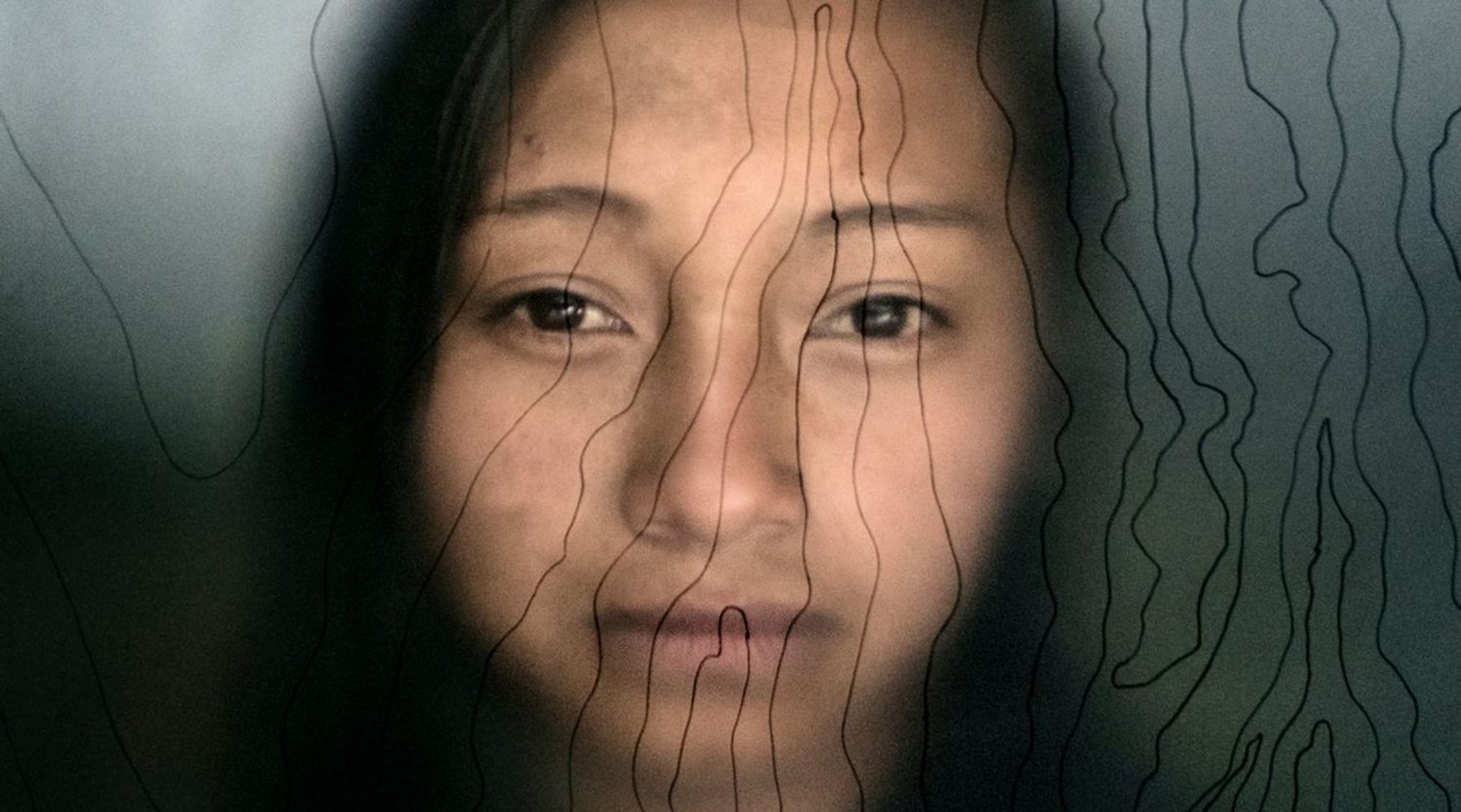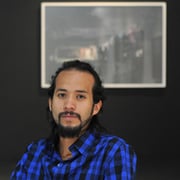The indigenous resistance has been a long-running historical battle. From the Spanish arrival to the present day, the indigenous peoples have fought to keep their lives close to rural land. Here we can see a traditional indigenous home in the department of Cauca. This image reminds us that the Indian house comes from years and years ago. © Jorge Panchoaga
Cauca homes and families are in the middle of the mountains where a war has been fought for decades. The bonding strength and an undying resistance has kept alive cultures and peoples for more than 500 years. For the indigenous peoples of Cauca, a house is not only the walls and roof, the house is the mountains of its territory, sky, rivers, animals, clouds and sacred stones. The dark chamber built into the house of the family Yalanda allows the mountains to fall into the kitchen. This is where the land is learned, through words and family histories. © Jorge Panchoaga
The department of Cauca is one of the places with the most forced displacements because of war. Maribel is an Ambalueña native who lives in her father's house with her children and husband. © Jorge Panchoaga
Leider was born and raised in resguardo (a reservation) de Ambaló. After finishing his college, he went to Bogotá to look for a better future. He had to go back home after finding nothing in the city. © Jorge Panchoaga
In the first half of the 20th century, many Indian families lost their homes and lands. Landowners associated with lawyers or priests tricked the Indians into signing contracts for the sale of their land. Many families lost everything and had to leave. © Jorge Panchoaga
Rubber boots have been used for many decades by peasants, indigenous people and Afro-Colombian communities who live and work in the field. They are an icon of rural life. However they are also a symbol of war. Armed groups have used rubber boots for their armies, guerrillas, paramilitary groups, criminal gangs. © Jorge Panchoaga
Chickens, dogs, cats and other animals are present in all households in Ambaló’s resguardo in Cauca. Many of these animals are left alone and abandoned when a family must relocate because of war. © Jorge Panchoaga
The indigenous guard's authority is the "resguardos." The national anthem of the Indigenous Guard says: "Guard, guard. Strength, strength. For my race, for my land.
And long live the indigenous guard ...
Companions have fallen but not overcome us. Because for every Indian killed, thousands are born. They are friends of peace, go head-value. And up canes,
with pride and without fear." Viviana is eight months pregnant with her second child will be part of this historic resistance. © Jorge Panchoaga
The hands of a grandfather. Miguel has cultivated the land since he was a child. He has fed his children and grandchildren with his bare hands. © Jorge Panchoaga
The sky is part of the house, part of the territory. The stars seen in front of the house do not look the same from anywhere else in the world, which is why the sky is part of Indian life. © Jorge Panchoaga
The machete or "chicorta" sword was used in many of the wars waged in the twentieth century. Today the machete is part of indigenous and peasant life everyday across the country. © Jorge Panchoaga
A family portrait made in a bedroom of the house with a camera obscura. You can see the "resguardo" (reservation) and its mountains. The camera obscura was built with the Pechene family. Together they learned about the phenomenon of light on the functioning of the eyes, and the beauty of their land, only to see the same mountains through the metaphor of darkness. © Jorge Panchoaga
Jesus Yalanda sleeping. Three of the Jesus' children have left Cauca because they had little chance of finding work. Displacement arises also out of necessity. © Jorge Panchoaga
Corn and baton are symbols of indigenous power, its history and its resistance © Jorge Panchoaga
The lines that are part of the portrait are the geographic curves of the mountains where she lives with each of her people. In the image, identity and territory are united as they are in real life. © Jorge Panchoaga
The house of the Pechene Yalanda family. In the 80s, men would gather in the middle of the night to plan how to recover the lands that had been stolen 40 years ago. The darkness covering their identities was used in the hopes of not being recognized. Each man held a fear of being targeted and killed by "the birds"—paramilitaries at that time. © Jorge Panchoaga
Juancho is a young Indian who neglects his studies. He now works helping his brother Manuel milking cows and tending the farm of a neighbor. © Jorge Panchoaga
A people without their territory, they have no possibility of being different, to lead the life they want. That is why identity and land are synonymous to survive. © Jorge Panchoaga
Dogs are the guardians of the night. They accompany morning milking and children to school. Dogs are part of the family. © Jorge Panchoaga
Family Portrait © Jorge Panchoaga
The Pechene family is reflected in the wall of a room, inside a camera obscura. © Jorge Panchoaga
Amidst the mountains of the Andes, Cauca indigenous families have decided to stay despite the conflict, and other problems that plague the area. After all, these communities have inhabited these mountains for centuries, which is why they choose every day to stay and continue to fight and to live. © Jorge Panchoaga




